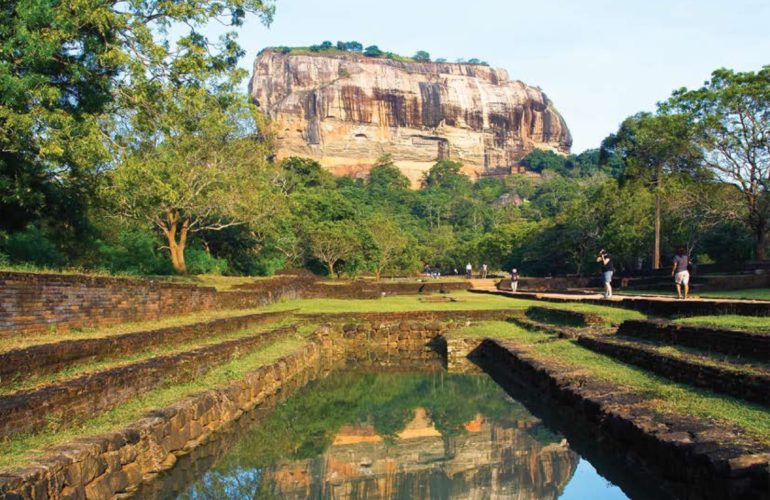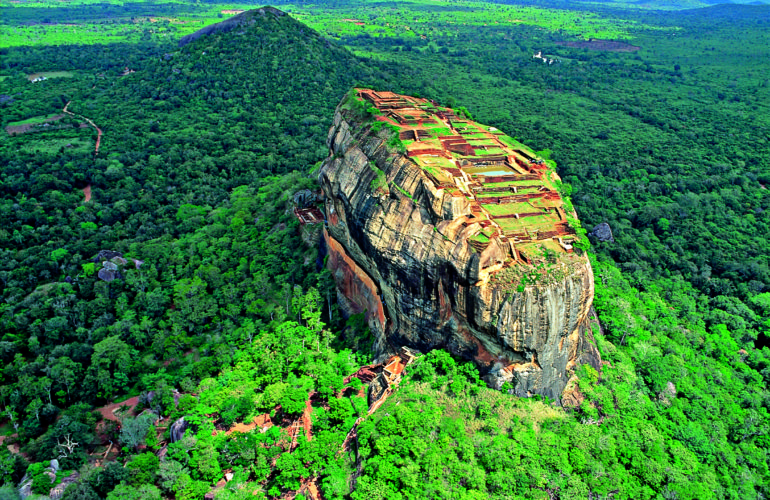Anuradhapura is the first capital of Sri Lanka located in north central province of Sri Lanka. It is one of the ancient capitals of Sri Lanka. Locally known as Rajarata (Land of Kings), the UNESCO World Heritage Site was the first established kingdom on the island (in 377 BC) and is at the heart of Sri Lanka’s Buddhist culture. The  Eight sacred places are a series of locations which has situated in Anuradapura where the Lord Buddha had visited during his three visits to the country. As a result of rich collection of archaeological and architectural wonders: enormous dagobas (brick stupas), ancient pools and crumbling temples, built thousand years back, UNESCO named it as a UNESCO world heritage site in 1982 under the name of Sacred City of Anuradhapura.
Anuradhapura is greatest monastic city of the ancient world that dates back to 5th Century BC remained the majestic seat of the kingdom of Sri Lanka until the 11th century A.D. Anuradhapura flourished as the Capital of Lanka from 377 BC to the end of the reign 1017 AD and was the Royal Seat for 1400 years under 130 kings as the capital of the Country.
The city gives a fascinating glimpse of a stately, well laid-out pre-Christian metropolis of massive Buddhist shrines and monasteries, splendid palaces, pavilions, parks, bathing ponds and vast reservoirs, many of them are masterpieces of architecture, art, sculpture, and engineering. Anuradhapura offers a host of memorable sightseeing highlights.
Other attractions at Anuradhapura are magnificent rock carvings of monumental richness and remarkable grace, colossal stone pillars that stand proud amidst the ruins of royal palaces, Buddhist monasteries and temples, and magnificent stone cut swimming pools with sophisticated hydrology engineering techniques.
RUWANWELI STUPA
One of the most significant religious places for Buddhists and it is one of the Eight Sacred Places in Anuradhapura. It is the principal monument of Mahavihara Complex of Anuradhapura and is situated between the Sri Maha Bodhi Tree and Thuparama Stupa. Ruwanveliseya was constructed by King Dutugamunu in the 2nd century BCE. The great chronicle Mahawamsa refers to Ruwanveliseya as the “Maha Thupaâ€Â. According to legends, there was a tree consecrated to a tree-sprit known as “Swarnamalee†at this point before the stupa was constructed. Hence, the stupa was also named as “Swaranamalee Maha Chetiyaâ€Â.
SRI MAHA BODHI (THE SACRED BO TREE)
The sacred Siri Maha Bodhi in Anuradhapura is considered as the oldest historical tree in the world. It was brought to Sri Lanka by Theree Sangamitta and planted in the Mahameghawana at Anuradhapura by King Devanampiyatissa under the guidance of Arahant Mihindu Maha Thero. It was a branch of the Jaya Sri Maha Bodhi at Buddhagaya where Lord Buddha was sat in Meditation when he attained supreme Buddha hood. This was a spiritual gift to king Devanampiyatissa by the Emperor Asoka on the request of his son Arahat Mahinda.
THUPARAMAYA
This stupa is the first stupa constructed in Sri Lanka after Buddhism was embraced as the state religion . It is one of the Eight Sacred Places in Anuradhapura. This was constructed by King Devanampiyatissa on the request of Arahat Mahinda Thera in 3rd century BCE. According to the Mahavamsa, the right collar bone of the Buddha has been enshrined in this stupa. The stupa was constructed in the form of a paddy heap. But after reconstruction of it in the 19th century, it has taken a shape of a bell. This stupa was housed in a circular Chethiyaghara (Vatadage). The remains of the ancient Chethiyaghara are retained as three rows of stone pillars around the stupa.






